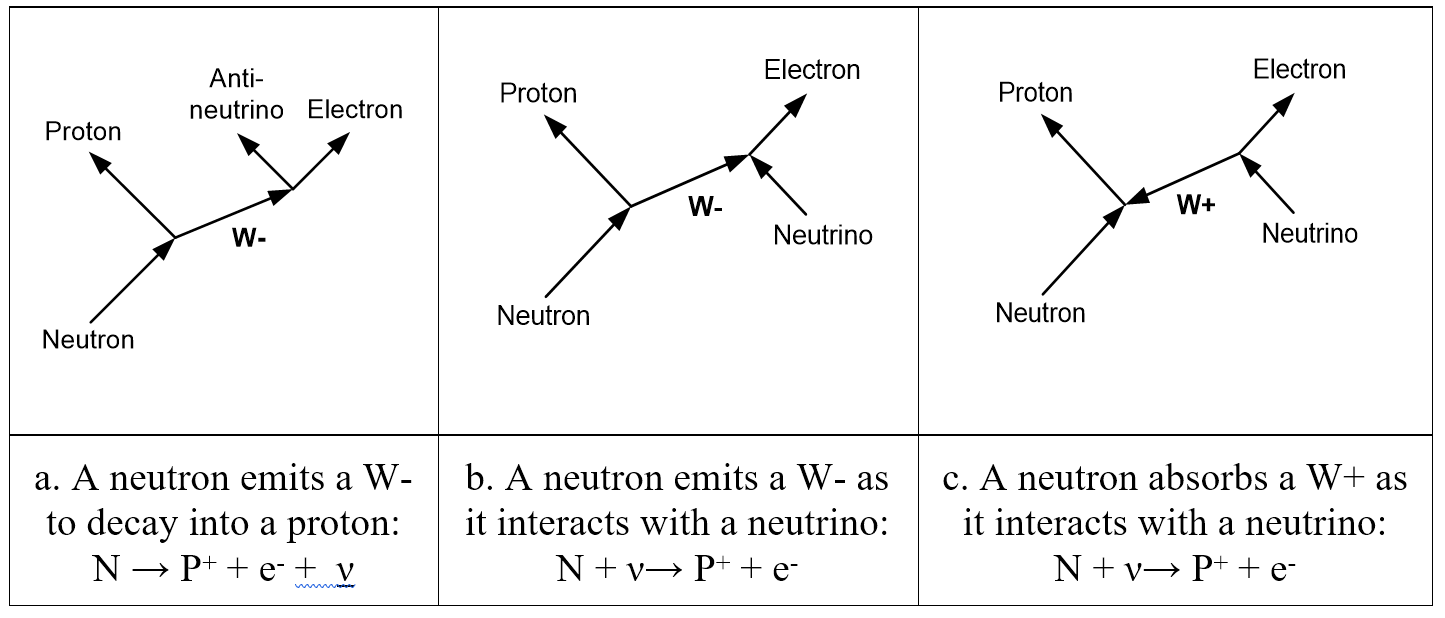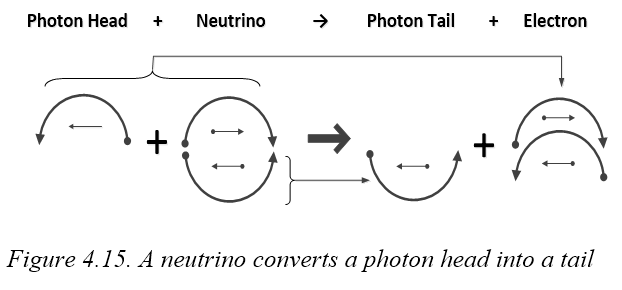A neutron is stable in a nucleus but after about fifteen minutes in empty space, one of its down quarks flips, to become an up quark, turning it into a proton. The standard model needed an agent to cause this effect and as gluons couldn’t do it, so it proposed a new weak force that:
1. Affects all matter. Electromagnetism affects charge, and gluons affect quarks, but the weak force affects all matter.
2. Violates parity-symmetry. Weak interactions are left-right different.
3. Has no bound state. Electromagnetism binds atoms in molecules, the strong force binds nucleons in the nuclei, and gravity binds stars in galaxies, but the weak force binds nothing.
4. Is asymmetric. Neutrons decay into protons but protons are stable in space.
Neither electro-magnetic nor strong forces act like this so by its now established practice, the standard model proposed a new field with new agents and charges. A new charge called isospin was retro-fitted to let charm quarks interact with down quarks but not up quarks, etc., as observed, but this time the proposed agents were heavier than protons, and a field that absorbed and emitted mass was unheard of.
However virtual agents were in fashion, and the accepted way to prove they existed was to find matching accelerator resonances, however brief. Finally, when in 1983 CERN found a million, million, million, millionth of a second event in the expected range, weak bosons joined gluons in the standard pantheon of particles. Based on this flimsy evidence, it was claimed that:
“Experiments have observed three bosons that carry the weak force” (Marburger, 2011), p221.
In fact, no bosons were observed carrying anything, just accelerator events compatible with them. For example, suppose a witness in a murder case said “I saw this knife killing the victim” and produced it as evidence, but cross-examination revealed that he manufactured the knife to fit the wound. No jury in the land would accept that evidence, so why accept the same argument in physics? CERN observed the energy spikes it made, not particles carrying any forces. No evidence at all links the CERN signal to neutron decay, but it is now said to occur when a tiny 4.8 MEv down quark emits a massive 80,400 MEv W particle, which is like an ant giving birth to an elephant!

It doesn’t help that the equations let a neutron decay in any of three ways (Figure 4.14), as it could:
1. Emit a W– particle that decays into an electron and anti-neutrino (Figure 4.14a),
2. Emit a W– particle that is hit by a neutrino to give an electron (Figure 4.14b),
3. Interact with a neutrino and a W+ particle to give an electron (Figure 4.14c).
Three possible causes might seem good but are three different alibis for the same event better than one? That a quark could emit a W-, or absorb a W+, is the sort of after-the-fact logic that good science tries to avoid.
Even worse, the above equations are reversible so protons should decay in space as neutrons do. This led to a fruitless thirty-year search for proton decay, ending in the massive Kamioka experiment that estimated the free proton half-life to be over a billion, billion, billion years. The standard model expected protons to decay in space, but they don’t.

What then does processing predict? If a neutron is one up and two down quarks, and a proton is two up and one down quark, a neutron will become a proton if one of its down quarks becomes an up quark. And if a down quark is a head-head-tail photon collision, and an up quark is a head-tail-tail collision, a down quark will become an up quark if one set of photon heads become tails. A proton will then become a neutron if the photon heads on one axis become tails.
Figure 4.15 shows how a neutrino that strikes an axis just right can convert photon heads into tails, to turn a neutron into a proton and emit an electron, as the beta decay equation describes (Note 1). However the reverse requires an electron to hit a proton, but getting an electron next to quarks takes a lot of energy, so proton decay only occurs in stars.
The weak effect of neutron decay can then be explained by neutrinos that are all around us, where isospin charge is just the phase of the incoming neutrino. It doesn’t alter the remainder so it isn’t electromagnetic, no photons are shared so it isn’t strong, and it affects any head-tail photon mix which is all matter. This theory is also testable, as it predicts that neutrons won’t decay in a neutrino-free space.
The W particles of the weak field, like the gluons of the strong field, are again unnecessary agents.
Note 1. In beta decay, a neutrino hitting a neutron can turn it into a proton by the equation N + ν → P+ + e−. Equally an electron can turn a proton into a neutron by inverse beta decay P+ + e− → N + ν. Why insert fictional boson particles into these equations?